example Use Case
Multi-Channel Playout Management
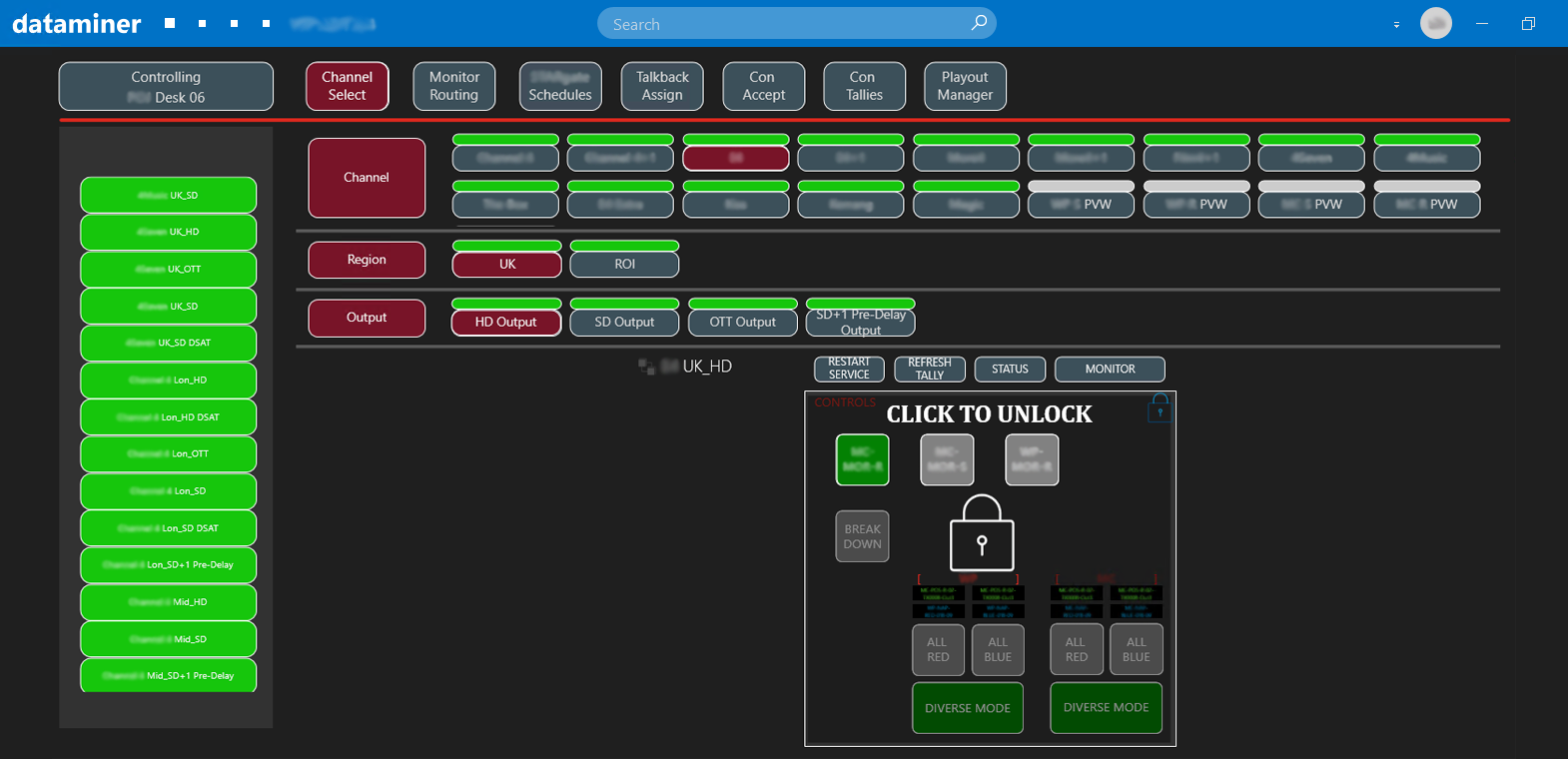
Media services partners often run hundreds of linear playout channels, each with its own specific configuration. Automating the onboarding and maintenance of new channels over time is crucial, especially in an ever more complex IP-based ecosystem. At the same time, all active channels must be closely monitored 24/7.
Explore this use case to see how DataMiner helps one of our customers in Europe automatically onboard and provision new playout channels, dynamically assigning the number of monitored playout services per service desk. This allows for the reduction of playout operators during off-peak hours, such as at night, when there are fewer live voice-over commentaries. DataMiner doesn’t just monitor the playout channel infrastructure; it also incorporates multiple audio and video probes within the playout chain to guarantee compliance with required standards for video, audio, and associated metadata. If an issue arises, our solution offers guidance to operators and suggests corrective actions.
USE CASE DETAILS
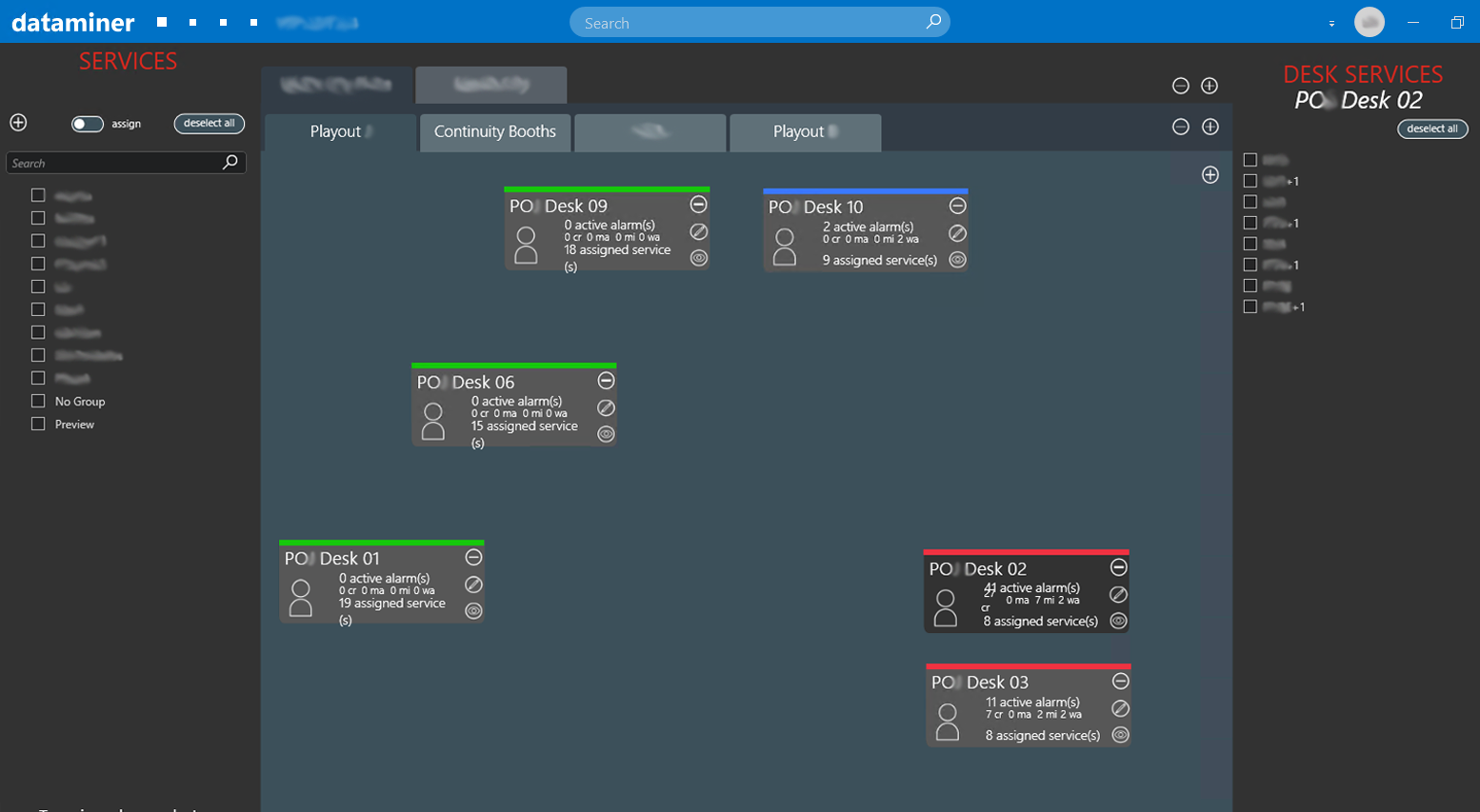 Our customer manages approximately 100 playout services in total. A playout supervisor can assign one or multiple services to each playout desk. DataMiner automatically configures the desk based on these assignments, such as routing signals to the appropriate multiviewer.
Our customer manages approximately 100 playout services in total. A playout supervisor can assign one or multiple services to each playout desk. DataMiner automatically configures the desk based on these assignments, such as routing signals to the appropriate multiviewer.
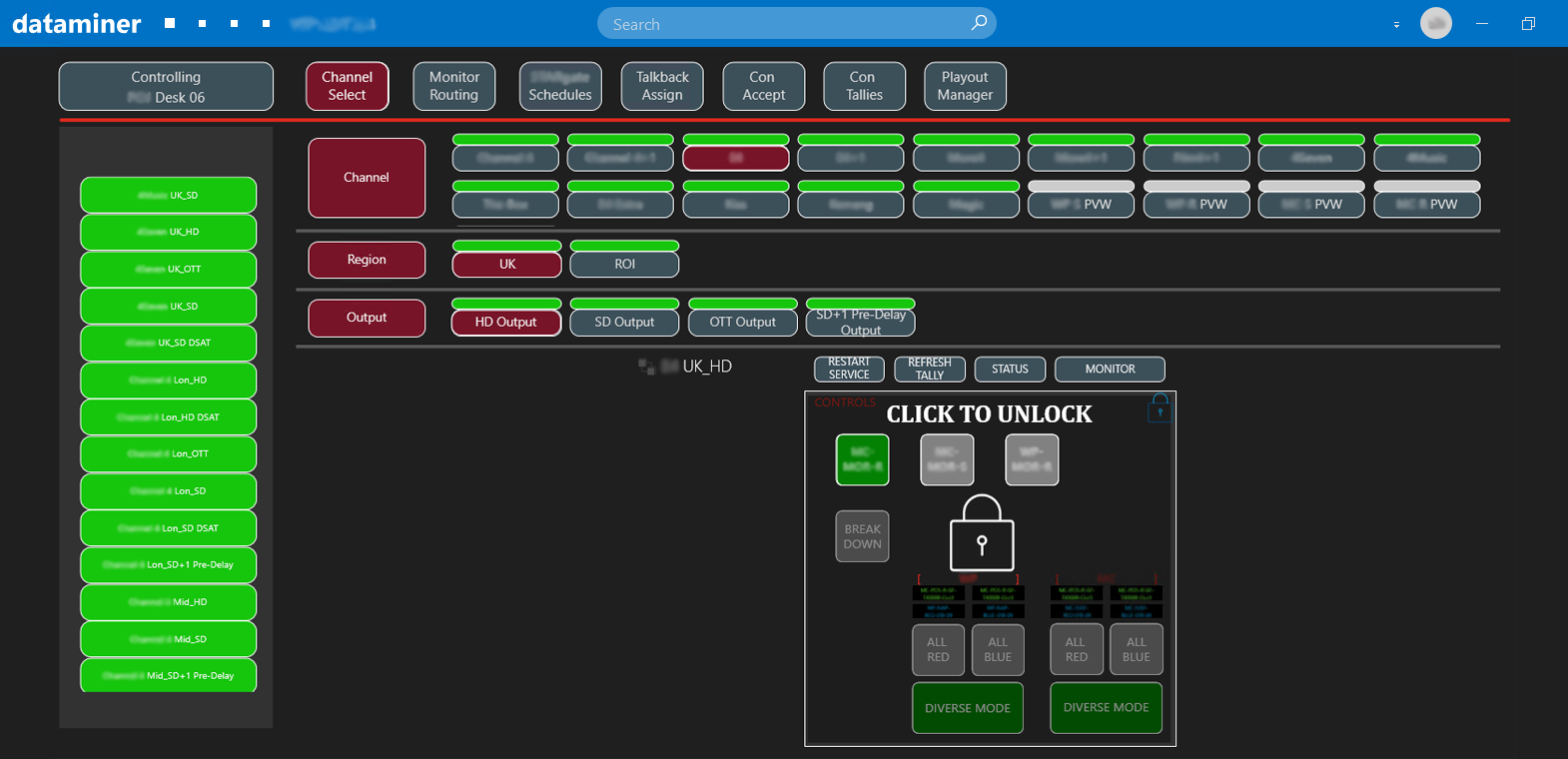 This screenshot shows the main playout operator user interface for managing all channels assigned by the supervisor to a single operator desk. Operators can view the aggregated overall health state for individual outputs, such as SD and HD, as well as grouped by region or channel. In case of an error, operators can easily switch between the main and backup playout automation, which operate from two different locations, or -worst case scenario- switch the channel to a breakdown source. As these channels are SMPTE ST2022/6-based, operators can also interchange signals between the RED and BLUE media networks. Depending on whether you have selected an individual output or channel, the action buttons control either a single service or all services that belong to one channel.
This screenshot shows the main playout operator user interface for managing all channels assigned by the supervisor to a single operator desk. Operators can view the aggregated overall health state for individual outputs, such as SD and HD, as well as grouped by region or channel. In case of an error, operators can easily switch between the main and backup playout automation, which operate from two different locations, or -worst case scenario- switch the channel to a breakdown source. As these channels are SMPTE ST2022/6-based, operators can also interchange signals between the RED and BLUE media networks. Depending on whether you have selected an individual output or channel, the action buttons control either a single service or all services that belong to one channel.
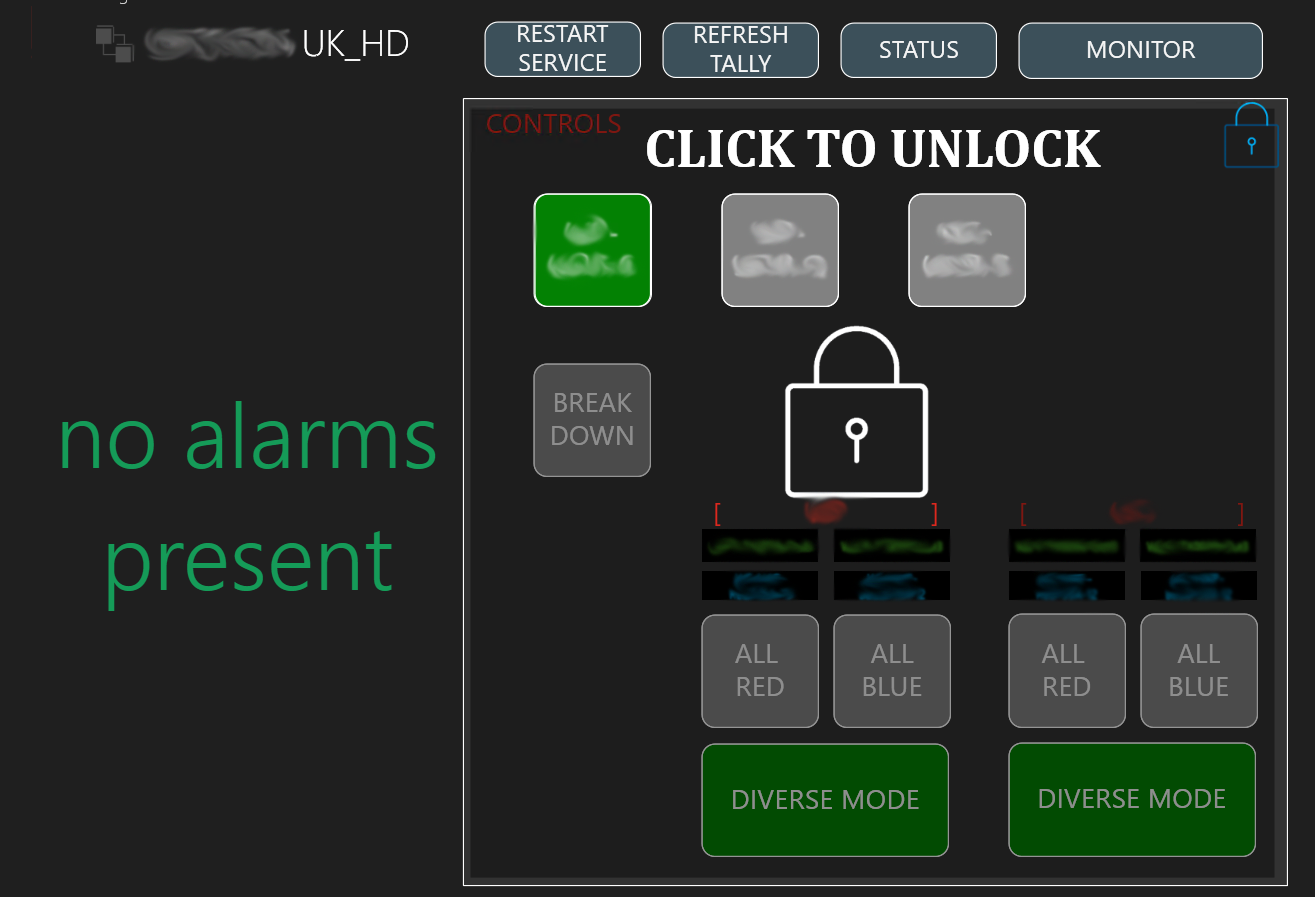 This view represents the overall health state of all regions and services for one channel. Color-coded buttons provide additional information; for example, yellow indicates that not all playout services that belong to that channel are running from the same main and backup automation system.
This view represents the overall health state of all regions and services for one channel. Color-coded buttons provide additional information; for example, yellow indicates that not all playout services that belong to that channel are running from the same main and backup automation system.
 Operators can adjust multiviewer layouts and directly control the audio monitoring unit from this interface. They can easily route uncompressed IP flows by dragging and dropping signals onto multiviewer tiles. For connection management, DataMiner interfaces with a Grass Valley Orbit SDN controller.
Operators can adjust multiviewer layouts and directly control the audio monitoring unit from this interface. They can easily route uncompressed IP flows by dragging and dropping signals onto multiviewer tiles. For connection management, DataMiner interfaces with a Grass Valley Orbit SDN controller.
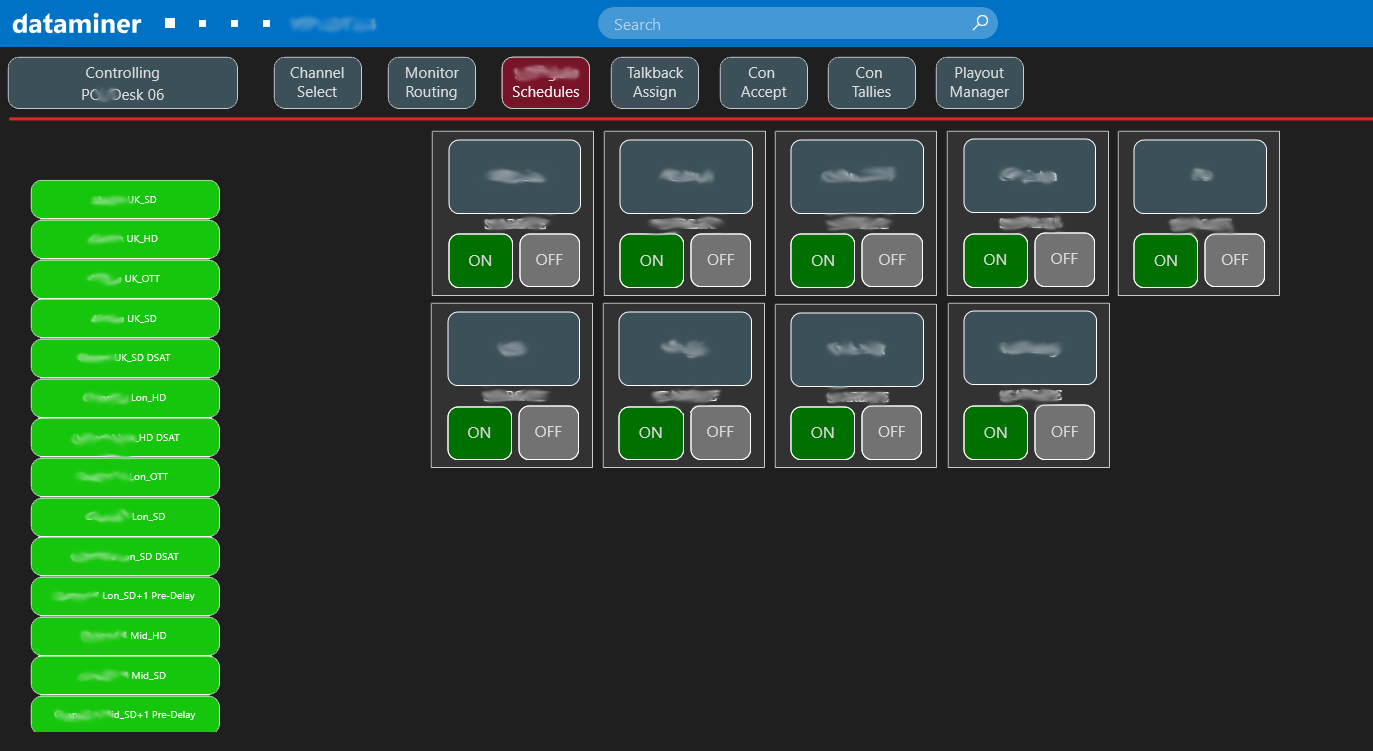 Additional controls per channel include talkbacks, tallies on a conbooth, or playout schedules.
Additional controls per channel include talkbacks, tallies on a conbooth, or playout schedules.
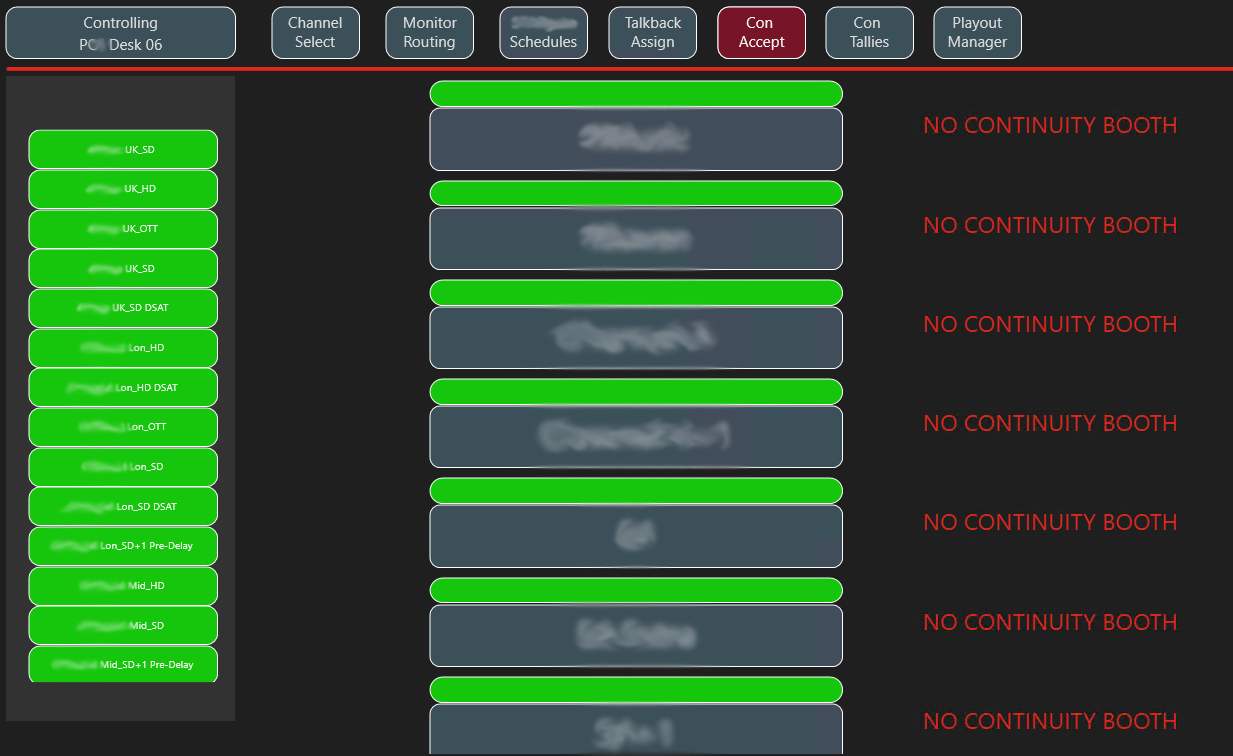 DataMiner also manages a number of continuity booths that can be dynamically assigned to any of the channels, e.g. for a voice-over.
DataMiner also manages a number of continuity booths that can be dynamically assigned to any of the channels, e.g. for a voice-over.
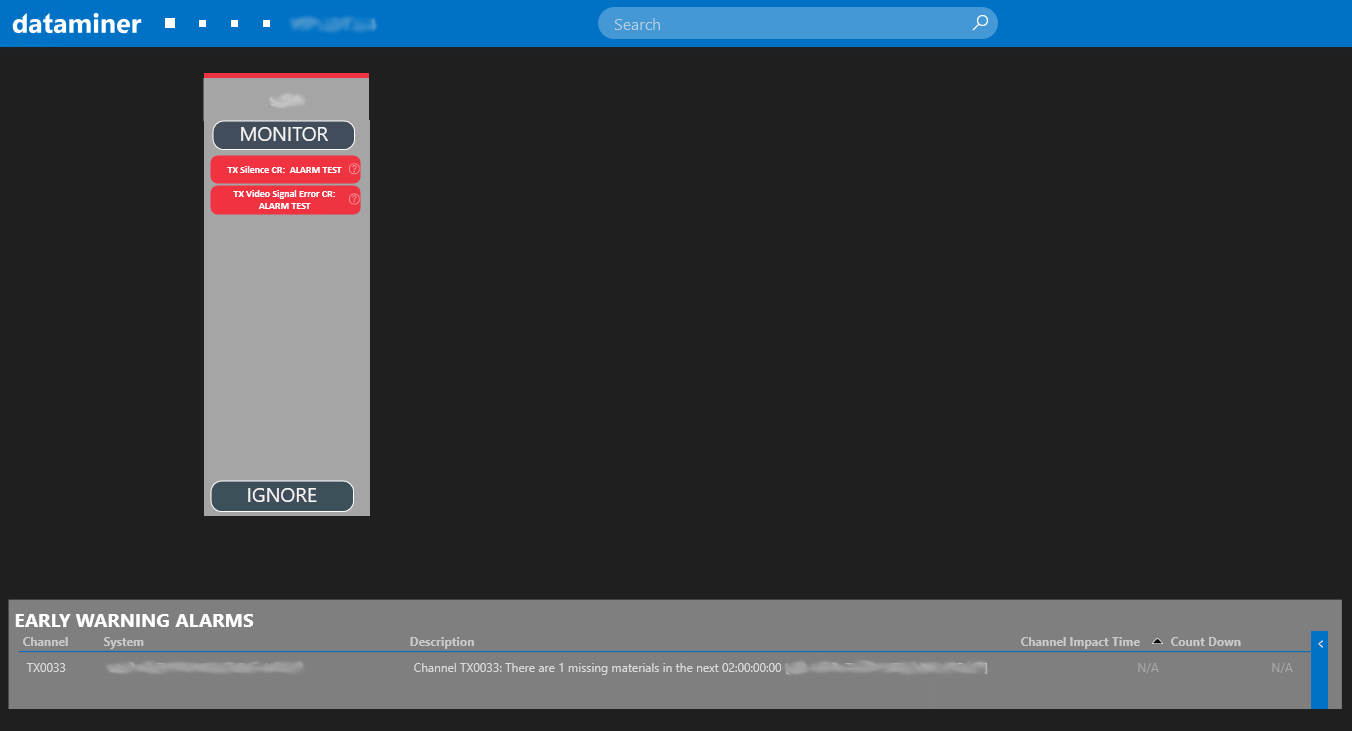 The built-in penalty box not only shows current active alarms, but also features an early warning list, e.g. to indicate missing content on any of the playout servers.
The built-in penalty box not only shows current active alarms, but also features an early warning list, e.g. to indicate missing content on any of the playout servers.
 All these functionalities are managed by DataMiner's Service and Resource Management (SRM) toolkit. This screenshot shows the booking schedule for some of the channels. Remember that even permanent 24/7 channels have a life cycle that needs to be managed. For instance, a planned maintenance slot on the main playout. This requires transitioning over to the backup, taking the main off-air, updating the main, bringing it back, and switching back from the backup to the main.
All these functionalities are managed by DataMiner's Service and Resource Management (SRM) toolkit. This screenshot shows the booking schedule for some of the channels. Remember that even permanent 24/7 channels have a life cycle that needs to be managed. For instance, a planned maintenance slot on the main playout. This requires transitioning over to the backup, taking the main off-air, updating the main, bringing it back, and switching back from the backup to the main.
 Provisioning a new channel has been highly automated. This screenshot shows a JSON file which was exported from our customer's channel database. This file includes all resources assigned to a new channel, along with all required parameters and settings - over 700 entries in this instance. DataMiner imports this file and configures the allocated equipment, such as the playout automation, SDI-to-IP gateways, audio and video processors, and connects the signals via Grass Valley Orbit. As a result, a new channel appears in the playout supervisor interface and can be assigned to a desk immediately. Channel provisioning times have been reduced dramatically, from months of manual preparation and configuration to just a few minutes.
Provisioning a new channel has been highly automated. This screenshot shows a JSON file which was exported from our customer's channel database. This file includes all resources assigned to a new channel, along with all required parameters and settings - over 700 entries in this instance. DataMiner imports this file and configures the allocated equipment, such as the playout automation, SDI-to-IP gateways, audio and video processors, and connects the signals via Grass Valley Orbit. As a result, a new channel appears in the playout supervisor interface and can be assigned to a desk immediately. Channel provisioning times have been reduced dramatically, from months of manual preparation and configuration to just a few minutes.